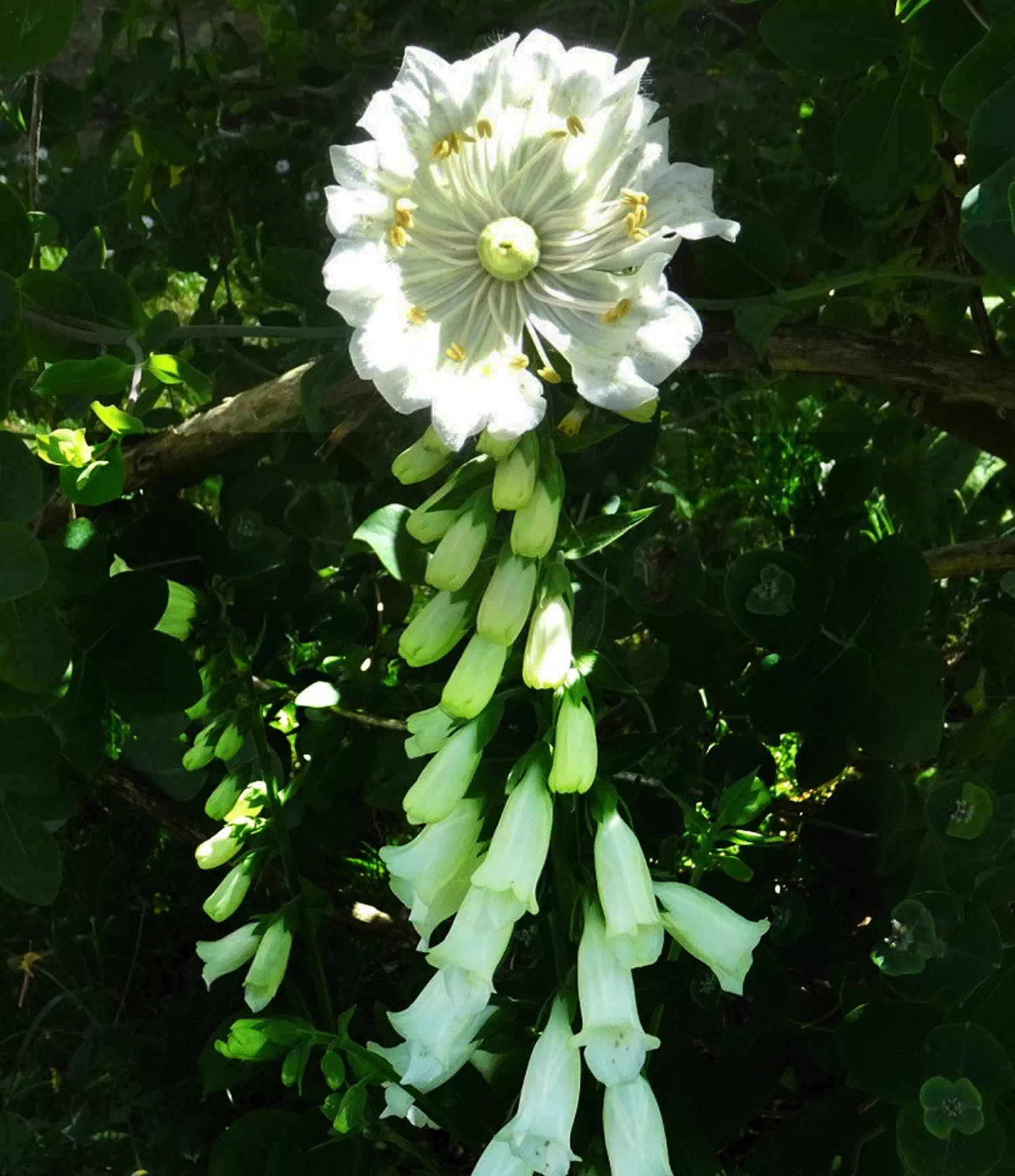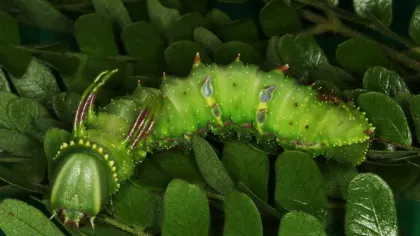15 July 2020
Lockdown finds: Floral novelties in foxgloves
Researcher Paula Rudall welcomes the increased awareness of nature generated by the recent lockdown caused by Covid-19.

During the Covid-19 lockdown, many people have spent time outdoors, either in their own gardens or in accessible parks and green spaces.
One unexpected result of this heightened awareness of nature has been a surge in discoveries of intriguing floral novelties, some of them recently sent to Kew.
This apparent escalation in “citizen science” underlines the importance of gardens in general, and botanic gardens in particular, in promoting public education about biology and evolution.
What does a wild-type foxglove look like?
The Common Foxglove (Digitalis purpurea, family Plantaginaceae) is a highly recognisable, typically biennial plant that is widespread throughout Europe and other temperate regions, flowering between June and September.
It produces tall spikes of long and pendant pink or less often white flowers, which open in sequence from the base of the spike upwards, until the indeterminate tip of the inflorescence becomes exhausted.
Normal flowers have five petals that are fused together to form a perianth tube; in many cases, the lower interior corolla lobe is spotted, forming an attractive platform for the large pollinating bees that crawl inside the flower in search of nectar. The flowers typically possess four stamens (the pollen-bearing organs) plus a sterile staminode, and two central carpels (the ovule-bearing organs).

Foxglove mutants
The flowers illustrated above and below are examples of terminal peloric mutants of Digitalis.
They represent rare but particularly striking examples of a spontaneous natural phenomenon that has long been discussed in the literature.
For example, this mutant was featured by Masters (1869) in his book on Vegetable Teratology, a topic that fascinated Victorian botanists.
In the terminal peloric mutant, the lateral flowers all conform to wild-type flowers but the spike ceases flower production at an early stage (i.e. it becomes determinate) and instead terminates in a strange large, bell-shaped flower that appears out of proportion with the others.


What is this unusual terminal flower?
The monstrous terminal flower in these Digitalis mutants is neither a true flower nor an inflorescence.
In most cases, it consists of a ring of ten or more spotted corolla lobes fused into a bell-like structure, surrounding numerous stamens and a central group of carpels.
The white form shown above lacks spots on the petals but is otherwise similar. One of the terminal flowers illustrated is somewhat different, as most of the central fertile organs (stamens and carpels) have been transformed into narrow spotted petal-like structures that appear infertile. This range of variation in these mutants has also been described in earlier literature, for example by Arber (1932).
What can we learn from floral novelties?
Some examples of abnormality in flowers are caused by external factors such as insect damage; these random cases are therefore not under genetic control and not heritable. On the other hand, spontaneous floral abnormalities that can potentially be transmitted to subsequent generations can contribute to our understanding of floral development and evolution, especially if the particular genetic disturbance is well understood and known from other species.
Many early botanists believed that terminal peloric flowers were the result of fasciation, which represents an abnormally flattened axis or fused axes.
However, recent evidence contradicts this interpretation. A very similar mutant of the common snapdragon (Antirrhinum majus, another member of Plantaginaceae) has been induced in several laboratories.
In this laboratory mutant, the centroradialis (cen) gene has been artificially deactivated, leading researchers to infer that in wild-type plants the cen gene is expressed during particular developmental stages that are critical in establishing the normal structure of the inflorescence.
Thus, observations such as these “lockdown finds” are interesting because they demonstrate that a particular mutation can occur in nature, not just in the laboratory, thus liberating the researcher from the artificial constraints of model species.

References
Arber, A. (1932) Studies in flower structure. I. On a peloria of Digitalis purpurea L. Annals of Botany, 46, 929–939.
Bradley, D., Carpenter, R., Copsey, L., Vincent, C., Rothstein, S. & Coen, E. (1996). Control of inflorescence architecture in Antirrhinum. Nature 379: 791–797.
Bello, M. A., Rudall P. J. González, F. & Fernández-Alonso, J. L. 2004. Floral morphology and development of Aragoa (Plantaginaceae) and related members of the order Lamiales. International Journal of Plant Sciences, 165, 723–738.
Friedman, W. E. 2020. Darwin in the garden: engaging the public about evolution with museum collections of living objects. Plants, People, Planet, XX: online early.
Masters, M. T. (1869) Vegetable Teratology. Ray Society, London, UK.
Rudall P. J. & Bateman, R. M. (2003). Evolutionary change in flowers and inflorescences: evidence from naturally occurring terata. Trends in Plant Science, 8, 76−82.
Worsdell, W. C. (1916) The Principles of Plant Teratology. Ray Society, London, UK



